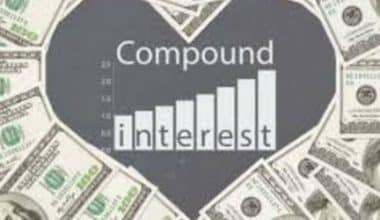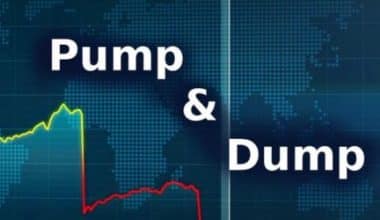Not every investor trades options, but those who understand how they work benefit from it. An option is a contract that says a certain financial instrument can be bought or sold at a certain price on a certain date in the future by the person who bought or sold the option. Generally, we call them derivatives, and this is because their value is “derived” from some other asset. A wide variety of securities, such as stocks, indexes, and exchange-traded funds, are available as options. Check out detailed information on everything you need to understand how options work, their types, benefits, and metrics used in measuring options.
Understanding How Options Work
An option is a financial contract that gives the holder the right, but not the duty, to purchase or sell some amount of an underlying asset or instrument at some future period for a predetermined strike price.
Options can be used in a variety of contexts and are a highly flexible financial instrument. The purchaser in such a transaction agrees to pay the seller a premium in exchange for certain privileges. A holder of a call option has the right, but not the obligation, to acquire the underlying asset within the contract’s specified time period and at the specified price. Conversely, a holder of a put option has the right, within a certain time frame and at a certain price, to sell the underlying asset. There are two bullish buyers and two bearish sellers for every call option, and two bearish buyers and two bullish sellers for every put option.
Changes in stock ownership represent a transfer of firm ownership. With trading options, however, one is exchanging one’s right (or duty) to acquire shares of stock in the underlying company. In addition to not granting ownership of the underlying securities, holding an option does not entitle the holder to any dividend.
How Options Trading Work
Whether you’re a pro or just starting out, trading options let you use a lot of different strategies. Of course, trading options is most ideal for applying the relevant tactics. As a general rule, trade call options when prices are going up, and vice versa for put options.
When an investor buys an options contract, he or she gets the right but not the obligation to buy or sell at least 100 shares of stock or other assets. his If a trade does not turn a profit, however, you are under no obligation to exercise your options. If an investor decides not to use his options, the most he can lose is the premium he paid to get the contracts in the first place. Since this is the case, trading options can be a time- and money-saving way to speculate on many different types of assets.
When you trade options, you can take a chance base on the following;
- How much the price of an asset will rise or fall in the future
- The likelihood that an asset’s price will rise above its current level in the future.
- If the price of an asset will go up or down from its current level,
Why Trade Options?
If you simply trade stocks, you can only take the bullish position of buying more shares and the bearish one of selling short.
No matter how you feel about the market, bullish, bearish, or neutral, options trading can give you greater flexibility in your trades. But to enjoy any options benefit, you need to understand how they work. The following are some of the reasons why you should trade option
- Make money with your existing portfolio
- You can secure a stock price for a set period of time without making a firm purchase.
- Be prepared in case one of your stocks suffers a significant drop in value.
- Purchase a stock at a future date when its price is lower than its current market price.
How Do I Start Trading Options?
First, decide what kind of options you wish to trade. Secondly, get a broker who allows options trading, and then you need to activate that trading type in your trading account. The broker will provide you with the necessary requirements
How Many Times Can I Buy and Sell Options in a Day?
Aside from the FINRA rules that prohibit purchasing and selling the same stock during the same trading day for a period of five trading days, there’s no restriction to trading options. Multiple buy orders can be placed for the same stock on the same day, and numerous sell orders can be placed for the same stock on the same day, without any limitations.
Types Of Options
There are two types of options, these are the call and put options;
Call and put options are integral decisions in trading options. With a call option, you’ll be able to buy a security at a price that has been determined in advance and by a certain date. You will also be able to sell a security at a future date and price if you hold a put option.
How Do Options Work for Beginners?
If you are yet to find your feet on how options work for beginners, you should take the following terms seriously. This is because clear understanding before a call or put option is the key to victory
#1. Premium
The stock option premium is a term that newcomers to the field should be familiar with. If you have ever bought insurance, you will be familiar with the word “premium.” But when it comes to trading options, it means the price at which an option is bought. It is worked out by taking both the price and the value of the underlying security into account.
#2. Derivative
Options are a type of financial instrument that is classified as a “derivative,” which means that their value is derived from that of another asset.
#3. Strike Price and Expiration Date
In this context, the term “strike price” refers to the predetermined price. The face value of a bond or share is the nominal or stated value. However, until the option contract’s expiration date, the holder has the right to exercise the option at the strike price.
#4. Intrinsic Value and Extrinsic Value
The “intrinsic value” of an asset is measured by subtracting the “strike price” of an option contract from the price of the underlying asset at the time the contract was written. An asset’s “intrinsic value” is its true value that isn’t affected by anything outside of it, like how much time is left on an option. The value of an asset that can’t be made by people alone is called its “intrinsic value.”
#5. In-the-Money And Out-Of-the-Money
“In the money” and “out of the money” are other great terms that beginners need to be conversant with. Generally, “in the money” means a trade is profitable, while one that is “out of money” records a loss. An option is said to be in-the-money (profitable) or out-of-the-money depending on the price of the underlying security as well as the amount of time that is left before it expires
How Does One Make Money With Options?
When it comes to how options work, there are two ways to make money. These are the call and the put options
#1. Call Options
With the call option, there are two ways to make money. The first is selling the option once the price of the asset falls below the break-even price, and the second is exercising your option to sell the underlying asset at the initial strike price.
It is best to sell the options contract once the price of the asset has dropped below the point where you will break even. This will automatically close your position and leave you with the difference between the premium that you paid and the premium that is currently being charged. This is your profit for that trade.
#2. Put Options
The price of the underlying asset must drop below the put option’s strike price before the option’s expiration for any investor, novice or professional, to make a profit from the put option. With this action, your position will be closed automatically, and you will receive the profit based on the difference between the open strike price and the stock price.
How Do You Make Money With Options?
Generally, anyone who trades options can make money by either buying or writing options. Options can be used to potentially profit from market volatility in either direction. Options allow for the buying and selling of future gains or losses in the market. There will always be an options strategy that can profit from the fluctuation in the values of underlying assets like stocks, currencies, and commodities.
What Is the Best Strategy for This Option?
Selling out-of-the-money put and call options are the most profitable options strategy.
Advantages Of Trading Options
The following are some of the pros of trading options;
#1. Offer Strategic Alternatives
The first pro of trading options is the fact that it provides a broad range of possible investments. The use of options allows for a great deal of maneuverability. Options allow for numerous simulations of alternative states or, rather, synthetic positions. With synthetic positions, investors have more than one way to reach the same investment goals, which can be very helpful.
#2. Low Capital Requirements
Another great advantage that options offer is their low capital requirement. Traders can take a position even with low capital. Although what you’ll see on Google says that trading options will require at least $5000 to $10,000. This isn’t entirely true. One can take a trading position with as little as $1000.
#3. Yield Higher Percentage In Terms Of Returns
It’s common sense that if you can reduce your expenses while maintaining or increasing your profits, your rate of return will improve. That’s the kind of return that options provide for their owners when they’re profitable.
#4. Provide Increased Cost-Efficiency
Options might make things more efficient while saving money when used effectively.
Options have great leveraging power. So, an investor can buy a position in options that is basically the same as a position in stocks but much cheaper.
#5. Less Riskier
The potential for less volatility than stocks makes them an attractive investment option.
Options can be safer for investors than stocks because they require a smaller initial investment and are less likely to be affected by price gaps in a way that could be disastrous. Whether or not they are useful depends on how you put them to work.
Disadvantages Of Trading Options
The following are some of the disadvantages of trading options;
#1. Lower Liquidity
The volume of many stock options is negligible. Each stock that can have options traded on it will have options trading at a variety of strike prices and expirations, so unless you are trading one of the most actively traded stocks or stock indices, the option you are trading will have very low volume.
#2. Higher Commissions
The commission per dollar invested is higher for options trades. For spreads where commissions are paid on both the buying and selling sides of the spread, these fees could be even higher.
#3. Higher Spreads
Due to lower liquidity, option spreads are typically wider. As a result, you’ll be paying more indirect fees whenever you make an options trade, as you’ll be forgoing the spread.
#4. Less Information
There are a few options for obtaining quotes and conducting analyses. When basic analytical data, such as quote prices or implied volatility, is difficult to obtain, options trading risk increases
#5. Complicated
To those unfamiliar with the subject, options can seem overwhelming. Those who are new to investing and even some seasoned pros often misunderstand them.
#6. Time Decay
This rule is always a general rule in effect when it comes to options: Time decay. As time passes after an option purchase, its value decreases.
#7. Options are not available for all stocks.
Even though there are options on a large number of stocks, this still limits your choices for how to invest.
Calculating Options Risk Using the Greeks
In order to understand how options work, you need to be familiar with their metrics. The word “greeks,” is often used to describe the different types of risk that come with a position in options. These things are called “Greek” because Greek letters are often used to represent them. While we will indicate the Greek letter symbol, we’ll also explain what these mean. Greek values are used by traders in evaluating option risk and managing option portfolios.
#1. Theta (Θ)
The rate of change in option price as a function of time, or time sensitivity, is theta, and this is denoted by the Greek letter theta (Θ), which is also used to denote an option’s time decay. Theta is the percentage by which the price of an option goes down as time goes on until it expires, assuming that everything else stays the same. Generally, theta as a risk metric rises or falls when it comes to options. When options are in the money, theta rises and falls when options are in and out of the money.
#2. Delta (Δ)
The option’s delta is the amount that its price changes for every dollar that the price of the underlying asset changes. That is, how much the price of the option fluctuates based on changes in the price of the underlying. A call option’s delta can be positive or negative, while a put option’s delta can only be positive or negative zero. Second, delta is also used to show the hedge ratio that options traders need to reach delta neutrality.
#3. Gamma (Γ)
The rate at which an option’s delta fluctuates in relation to the price of the underlying asset is denoted by gamma (Γ). This type of price sensitivity is referred to as second-order (second-derivative) sensitivity. If the underlying security moved by $1, the gamma value would represent the amount by which the delta would change. Generally, the reliability of an option’s delta can be measured with gamma. Gamma increases more quickly in magnitude as expiration approaches and is greatest for at-the-money options and smallest for in- and out-of-the-money options.
#4. Rho (p)
Rho (p) is the percentage by which the value of an option shifts for every one percentage point shift in the interest rate. The interest rate sensitivity index measures just that. Let’s use a call option with a rho of 0.05 and a price of $1.25 as an example. All else being equal, a 1% increase in interest rates would cause the call option’s value to rise to $1.30. With put options, the inverse is correct. At-the-money options with a long time until expiration benefit most from Rho.
#5. Vega (V)
The option’s Vega (V) is the rate at which its value changes based on how volatile the underlying asset is thought to be, which is the volatility sensitivity of the option. The Vega of an option shows how much its price changes for each percentage-point change in its implied volatility. The value of an option goes up when volatility goes up because it means that the underlying instrument is more likely to have extreme values. When volatility declines, however, option prices tend to fall. Longer-term, at-the-money options have the highest Vega values.
Other Greeks Metrics
- Vomma
- Ultima
- Zomma
- Epsilon
- Speed
- Lambda
- Vera
Conclusion
Options are great vehicles when it comes to building one’s investment portfolio and understanding how they work is paramount if you intend to befit from them. Check out the detailed guide on how options work
- PUT OPTIONS: How To Trade Put Options In Simple Steps
- DELTA BUSINESS CREDIT CARD: Best Delta business credit card
- SHORT PUT OPTION: Overview, Examples (+Trading Tips)
- ALTERNATIVE INVESTMENT: TYPES AND EXAMPLES
- COVERED CALL OPTION: How To Use Covered Call Option Strategy Effectively (+ Detailed Guide)
- DELTA BUSINESS CREDIT CARD: Best Delta Business Credit Card






